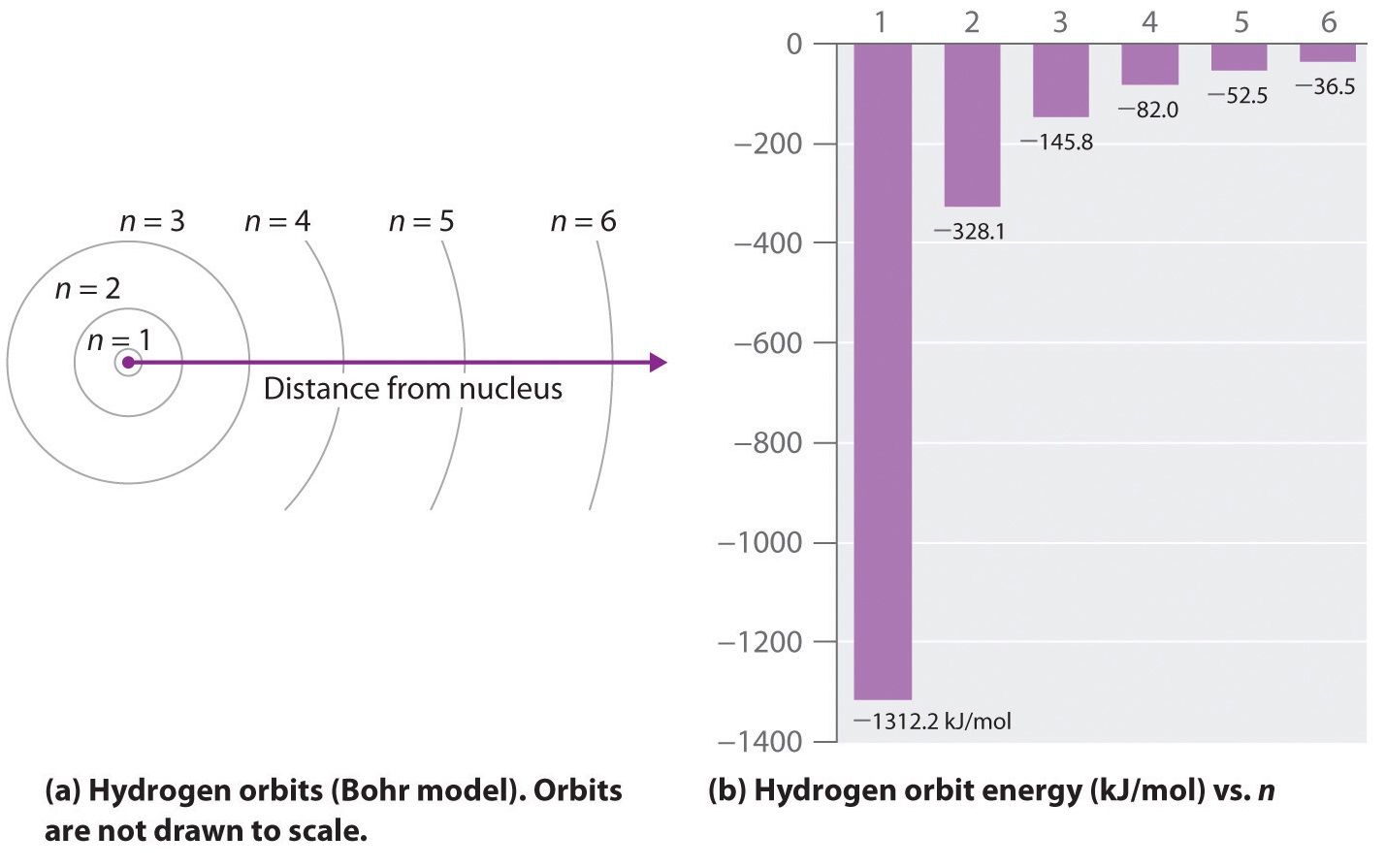What atomic number of an element "X" would have to become so that the 4th orbit around X would fit inside the 1st Bohr orbit of H-atom?
1 Answer
Well, the radial distance from the nucleus of a hydrogen-like atom is given by
#r = n^2 (a_0/Z)# .
Interestingly enough, one often sees the substitution
#sigma = (Zr)/(a_0)#
in hydrogen atom wave functions. I derive this result below. Upon solving this you should get
We are asking, what would the atomic number

For a given Bohr orbit, the wavelength is given by
#2pir = nlambda_e# #" "bb((1))# where
#r# is the radial distance from the nucleus,#n# is the principal quantum number, and#lambda_e# is the electron wavelength.
Since electrons have rest mass
#lambda_e = h/(m_ev)# #" "bb((2))# where
#v# is its velocity and#h = 6.626 xx 10^(-34) "J"cdot"s"# is Planck's constant.
We can thus rewrite
#2pir = n(h/(m_ev))#
#=> vr = (nℏ)/m_e# ,#" "bb((3))# where
#ℏ = h//2pi# is the reduced Planck's constant.
Next, the coulomb force for a hydrogen-like atom is given by the derivative of the potential
#-(delV)/(delr) = -del/(delr)[-(Ze^2)/(4pi epsilon_0 r)]#
#= -(Ze^2)/(4pi epsilon_0 r^2)# #" "bb((4))# ,where
#epsilon_0 = 8.854 xx 10^(-12) "F/m"# is the vacuum permittivity and#e = 1.602 xx 10^(-19) "C"# is the elementary charge.
From uniform circular motion in physics, the centripetal force (in the Bohr picture) brought about by the coulomb force (with inwards, or attraction, being negative) is given by
#F_c = -(m_ev^2)/r# .#" "bb((5))#
Equating
#(m_ev^2)/r = (Ze^2)/(4pi epsilon_0r^2)#
#=> (Ze^2)/(4pi epsilon_0m_e) = v^2r# #" "bb((6))#
Comparing
#v^2r^2 = ((nℏ)/m_e)^2 = (Ze^2)/(4pi epsilon_0m_e) cdot r#
Now if we solve this for
#r = ((nℏ)/m_e)^2 cdot (4pi epsilon_0m_e)/(Ze^2)#
#= n^2 ((4pi epsilon_0 ℏ^2)/(m_e e^2)) cdot 1/Z #
By comparison with Wikipedia, we use the definition of the Bohr radius,
#color(blue)(barul(|stackrel(" ")(" "r = n^2 (a_0/Z)" ")|))#
So for a hydrogen-like atom, if we want
#Z = (n^2 cdot a_0)/(r)#
#= n^2 cdot cancel(a_0/a_0)^(1)#
For the fourth Bohr orbit, we have

